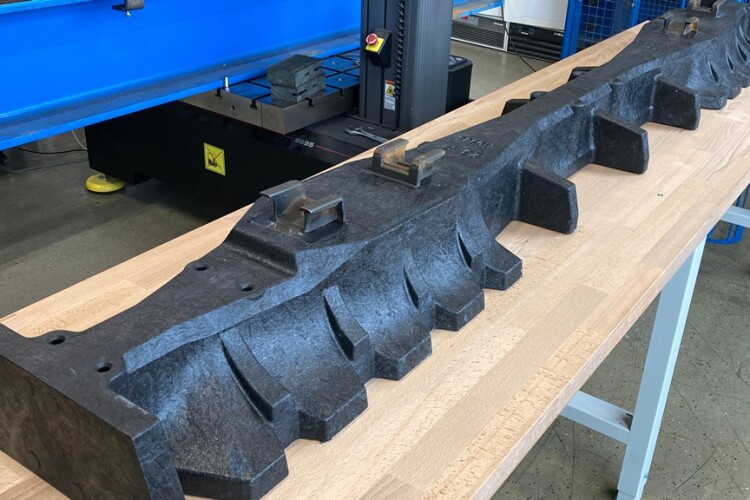Network Rail’s Wales and Western region worked with the organisation’s Technical Authority – responsible for safety and engineering – to create a more environmentally friendly sleeper.
They have called the new product ‘hedgehog’ sleepers, not because they are kind to the spiky creatures but because the ends resemble hedgehogs nesting under the rail.
According to Network Rail, hedgehog sleepers contain 90% less embedded carbon than wooden models and 78% less than those made from concrete. Research has found that sleepers currently account for 30% of the carbon embedded within railway infrastructure.
Network Rail installs approximately 350,000 concrete sleepers a year. If those were to be replaced with hedgehog sleepers, it could represent an annual carbon footprint reduction of approximately 24.5 million kilograms of carbon dioxide – the equivalent of taking 12,250 family cars off the road every year.
In addition, approximately 150,000 wooden sleepers are replaced each year – if the new hedgehog sleepers were used instead, similar carbon equivalent savings could be made, it is claimed.

The sleepers, developed with Lankhorst Engineered Products, are made up of 90% recycled materials and are themselves fully recyclable. As well as reducing carbon emissions, the new composite design means that hedgehog sleepers will last at least twice as long as their concrete counterparts, reducing the need to close parts of the railway to install replacements as they near the end of their working life. The sleepers can also be laid mechanically, which would make replacement quicker and easier.
Nick Matthews, Network Rail’s programme engineering manager, said: “Previously, sleepers were either made from hardwood or concrete. The raw material for wooden sleepers comes from South American rainforests, which can result in damage to habitats, a reduction in biodiversity, and decreased carbon absorption from rainforests. Producing concrete can also have a damaging impact on the environment and increased carbon emissions.”
Lankhorst Engineered Products technical director Aran van Belkom, said: “This project is a good fit with our purpose: think limitless, act sustainable for future generations. We appreciate Network Rail’s engagement to set a new industrial standard.”
No mention has yet been made of the cost implications, or when we might actually see hedgehog sleepers being adopted.
Got a story? Email news@theconstructionindex.co.uk



